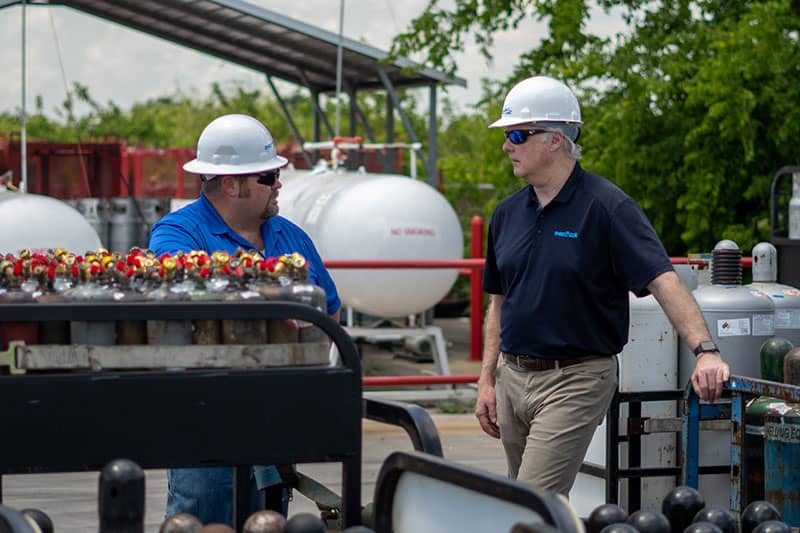Using nexAir’s Expertise to Optimize Welding Processes in Commercial Fabrication
Commercial fabrication shops run on tight margins and tighter deadlines. When your welding processes aren’t optimized, you’re losing money on every job through wasted gas, excessive rework, and slower production than your competition. We work with fabricators to find the inefficiencies in their welding operations and fix them, backed by expert KnowHow™ from years of optimizing welding processes in shops that build everything from structural steel to custom equipment.
Start By Understanding Your Actual Process
Most shops think they know how their welding processes work, but the reality on the floor often differs from what’s written down. One welder runs different settings than another on identical joints. Gas flow rates vary by shift because nobody standardized them. Filler metal gets chosen based on what’s closest, not what’s best for the application. We spend time watching how your team welds, not just reviewing your procedures. That observation reveals where time gets wasted, where quality suffers, and where small changes could make big differences.
Match Your Gas to What You’re Building
Shielding gas affects weld speed, penetration, and the amount of cleanup your team does afterward. Many fabricators use the same gas mix for every job because switching seems complicated or because that’s what they’ve always used. Using 75/25 argon-CO2 for everything works, but it’s not always optimal.
- Stainless fabrication might benefit from tri-mix that reduces oxidation.
- Aluminum work needs pure argon or argon-helium blends depending on thickness.
- Heavy structural steel could use higher CO2 content for deeper penetration and lower cost.
We help you figure out which jobs justify specialty gases and which ones don’t. Sometimes the answer is sticking with what you have. Other times, switching gas on specific applications cuts welding time by 20% and reduces grinding by half.
Dial In Equipment Settings That Work
Welders develop their own preferences for voltage, wire speed, and travel angle. That’s fine when you have experienced people who produce good results. It becomes a problem when you’re training new welders or trying to figure out why quality varies so much between operators. Establishing baseline parameters for common joint types gives everyone a starting point that works. New welders learn faster because they’re not guessing at settings, while experienced welders can deviate when needed but return to known-good parameters when problems develop. We help fabricators document what settings produce the best results for their most common applications. That documentation becomes training material for new hires and a troubleshooting reference when welds start failing inspection.
Reduce The Finishing Work That Kills Your Schedule
Watch any fabrication shop and you’ll see welders spending almost as much time grinding as they do welding. Spatter gets chipped off. Rough beads get smoothed down. Excess material gets removed. Most of this finishing work exists because something upstream went wrong—gas flow that’s too high or too low, filler metal choices that don’t match the application, torch angles that look fine but create extra work later.
Your welding operation has specific bottlenecks and inefficiencies that we can help identify and fix. Reach out to nexAir and we’ll evaluate where you’re losing time and money. Our expert KnowHow™ helps you Forge Forward with welding processes that make sense for the work you do. Let’s have a conversation about your shop and figure out what improvements would strengthen your operation most.
Looking out for your future
Get your career going on the right track with nexAir
Find out how nexAir KnowHow has impacted businesses all over the Southeast
Our expertise makes us more than a valuable partner, it makes us headlines
Don't see what you're looking for?
Everything we offer is a click away and it will arrive before you know it.


